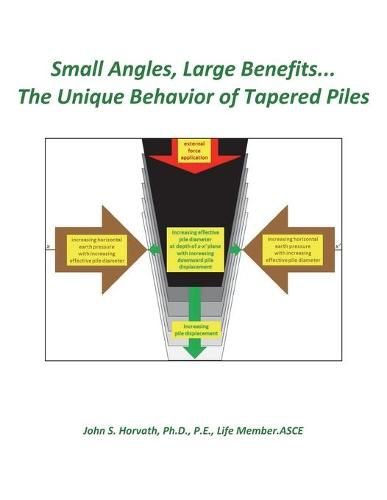Readings Newsletter
Become a Readings Member to make your shopping experience even easier.
Sign in or sign up for free!
You’re not far away from qualifying for FREE standard shipping within Australia
You’ve qualified for FREE standard shipping within Australia
The cart is loading…






Tapered driven piles have been used worldwide for over 7000 years. Despite this long, successful history, foundation designers and contractors still do not fully appreciate what is called ‘taper benefit’, i.e. the fact that in friction- or floating-pile applications that tapered piles are generally much more cost effective than constant-perimeter piles on a load-bearing basis. This is because the unique physical mechanism of wedging by which tapered driven piles develop resistance to both axial-compressive and uplift loads is not fully understood and appreciated. Furthermore, this wedging mechanism develops in two stages, both during initial driving and during load application, so that a tapered driven pile literally develops more soil resistance with increasing axial-compressive load. This book explores the history of tapered piles and their unique behavioral nature to a granular level of detail that has not been published previously. This book is intended to be a resource document for both stakeholders involved in the selection, design, and construction of deep foundations as well as academicians for use in both teaching and research.
$9.00 standard shipping within Australia
FREE standard shipping within Australia for orders over $100.00
Express & International shipping calculated at checkout
Tapered driven piles have been used worldwide for over 7000 years. Despite this long, successful history, foundation designers and contractors still do not fully appreciate what is called ‘taper benefit’, i.e. the fact that in friction- or floating-pile applications that tapered piles are generally much more cost effective than constant-perimeter piles on a load-bearing basis. This is because the unique physical mechanism of wedging by which tapered driven piles develop resistance to both axial-compressive and uplift loads is not fully understood and appreciated. Furthermore, this wedging mechanism develops in two stages, both during initial driving and during load application, so that a tapered driven pile literally develops more soil resistance with increasing axial-compressive load. This book explores the history of tapered piles and their unique behavioral nature to a granular level of detail that has not been published previously. This book is intended to be a resource document for both stakeholders involved in the selection, design, and construction of deep foundations as well as academicians for use in both teaching and research.